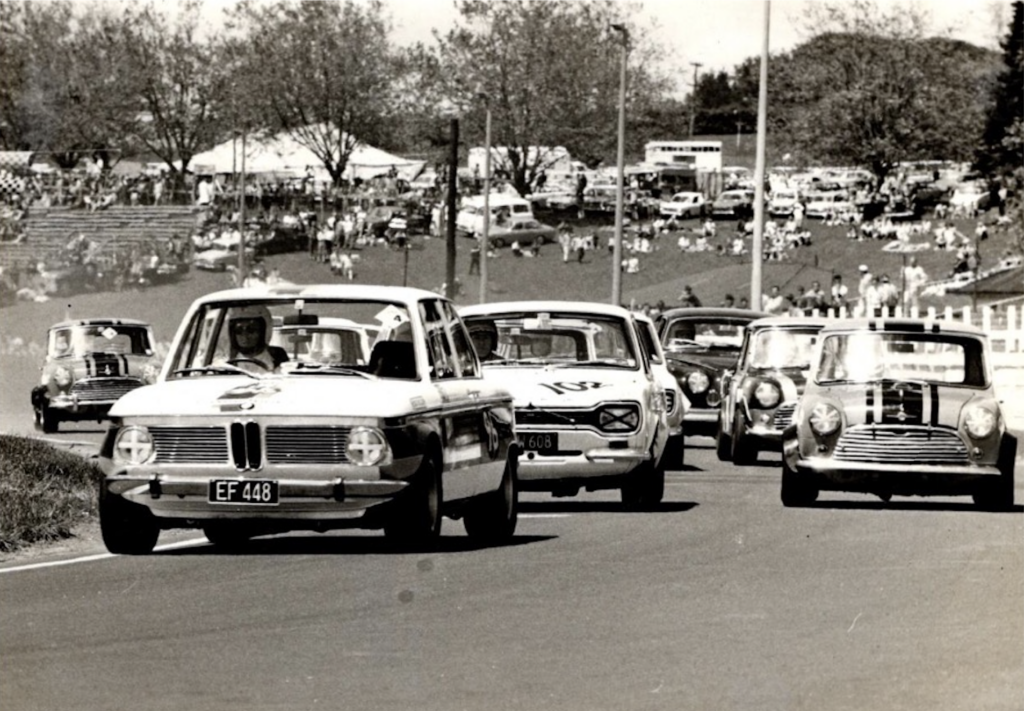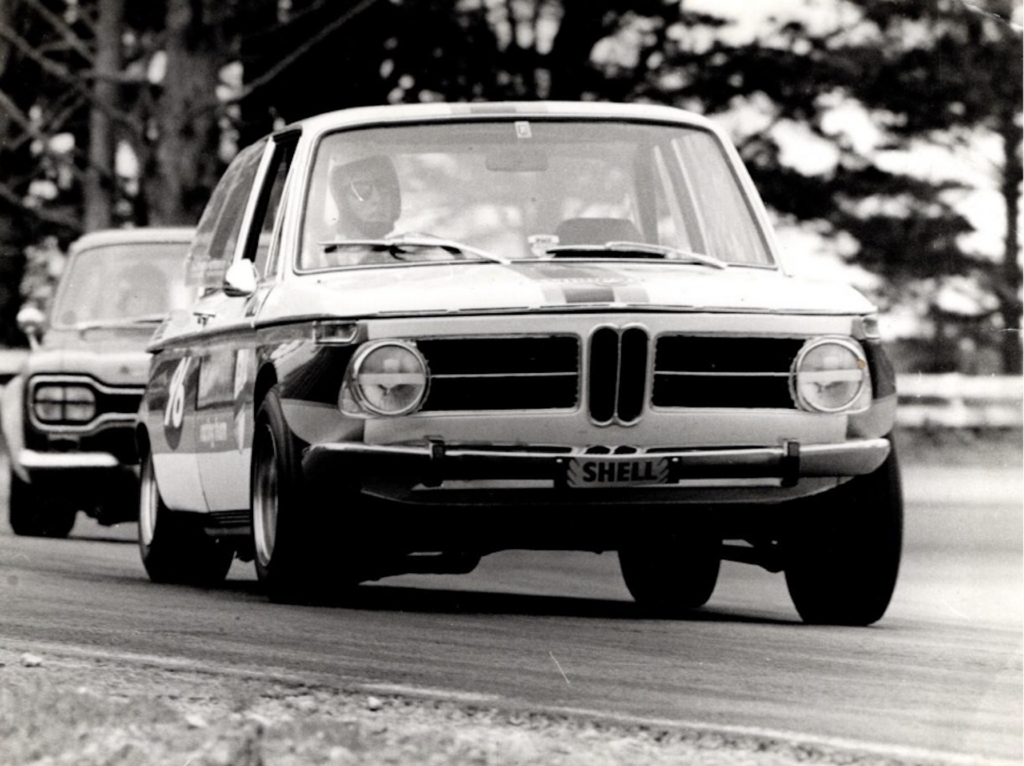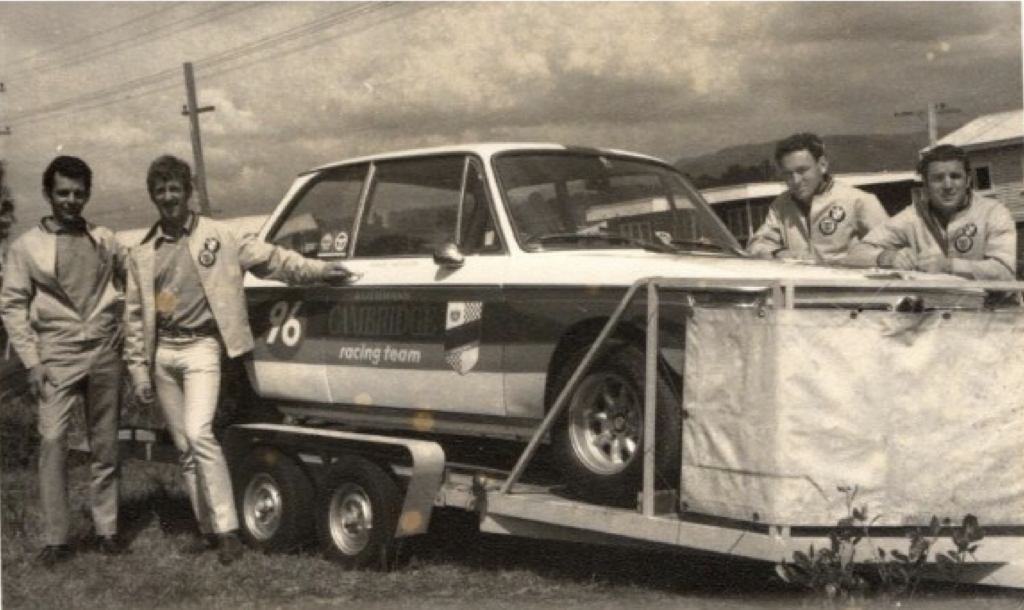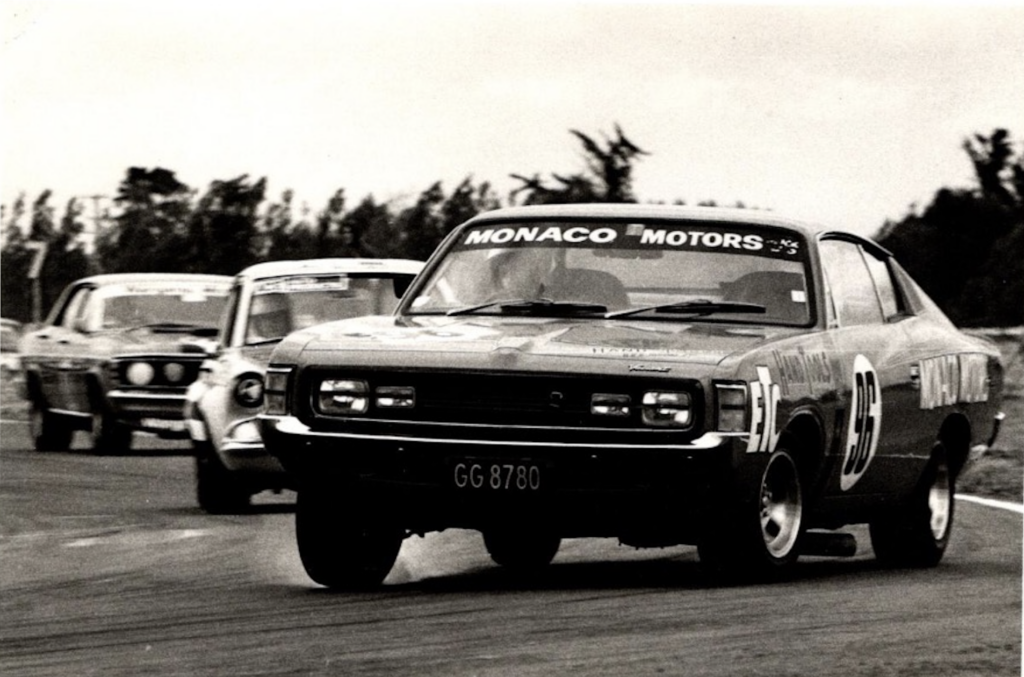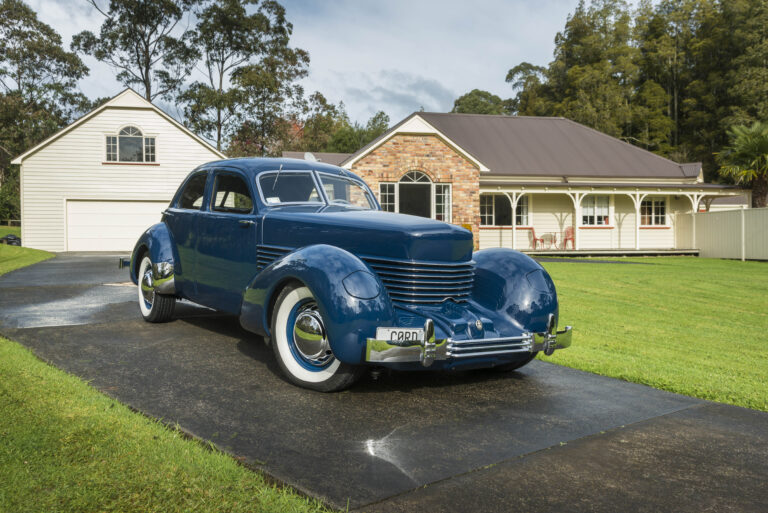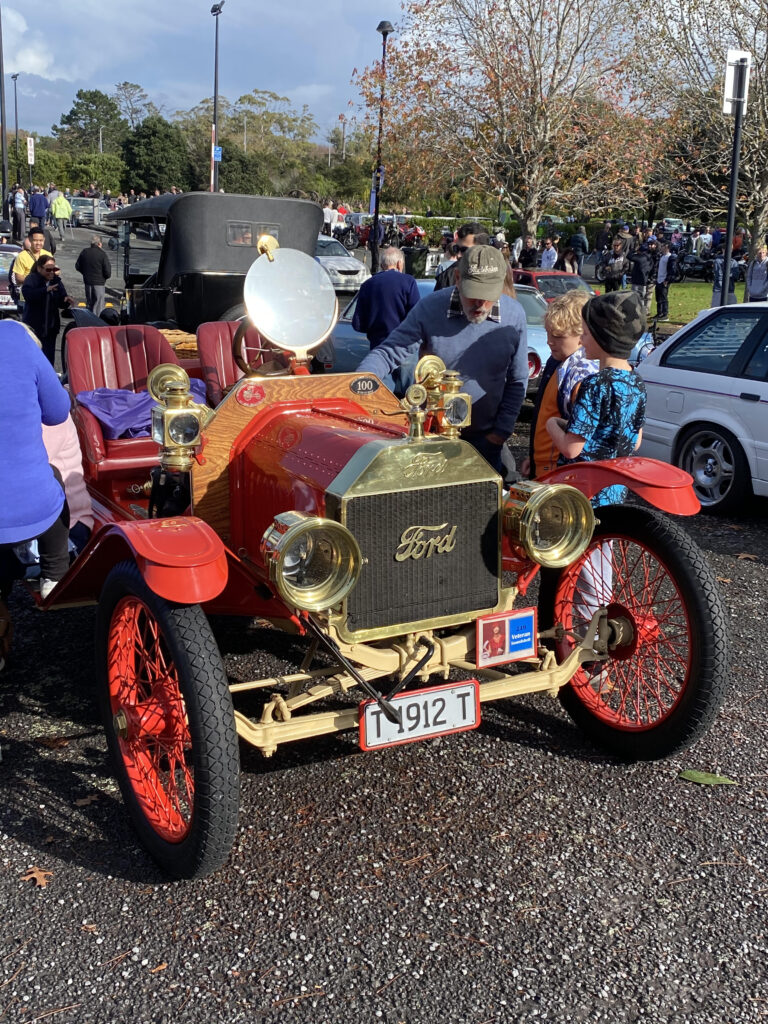Size doesn’t matter
But what Rodger Anderson did with a Mini — winning New Zealand’s Saloon Car Championship — points to giant-killing talent
By Michael Clark

At first, I wondered if I’d driven up the wrong driveway. The car in the garage was an early Mustang resplendent in royal blue with two broad gold stripes, which was not what I was expecting. I knew that Rodger Anderson, who made his name in Minis and a BMW 2002, was a Porsche man these days — the other end of the spectrum from American muscle. I had no idea of his affection for Detroit iron. It didn’t take long to discover just how passionate this former Saloon Car Champion is about cars, as long as they’re interesting. Having turned 80 in June, he can look back at over six decades of having cars and motor racing as a central focus. I knew from his younger brother Donn (‘Motorman’) that it was Rodger who was, and remains, the arch enthusiast who could hardly wait to get to Ardmore for the Grand Prix each January, of which he recalls: “By 1957 we had progressed to grandstand seats.” These Anderson boys were early starters. At about the same age that Donn launched his writing career, Rodger was working in the family business. “I was repairing toasters as an 11-year-old, started my apprenticeship at Anderson Electrical in 1956, and by 1960 I was a registered electrician and working like a Trojan.”
Street cred
His initial speed thrills came via a battery-powered trolley but by the time he was 15 a deal was struck with his mother to share a Morris Minor convertible. “A group of us had them, and when we weren’t perfecting our handbrake turns in Cornwall Park, we were drag racing on Carr Road.” By 1962, he and his mum were sharing an 850cc Mini but his desire to get “a bit more serious” came via an MG Midget — not that aspirations for racing were supported by his father. “If you don’t give up that stupid motor racing you can forget having anything to do with Anderson Electrical …”
But Rodger’s fire had been ignited, and in 1964 he won a handicap race at Pukekohe in his recently acquired Sunbeam Alpine wearing the number he ran with for almost his entire career. “I liked 96 because I figured it was still the same even if you’re on your roof.” Rodger had embraced supercharging, and a Volkswagen and a Midget were both ‘blown’. “I raced the supercharged Midget in the one-off reverse direction meeting at Pukekohe and came up against a young David Oxton in a [Daimler] SP250.”
Rodger’s attentions were then diverted by his “money-making distractions” that included a bit of buying and selling until a 1275cc Mini Cooper S crossed his path. “I raced that quite a lot but it was 100% stock so no use on racetracks, although quite successful on grass tracks, hillclimbs, and gymkhanas.”
A turning point came in 1964 when New Zealand International Grand Prix supremo Ron Frost phoned and asked, “Did you see Paddy Hopkirk’s Mini-spinning demonstrations?” Rodger confirmed he had witnessed the Irish rally ace’s antics at Pukekohe and was then asked, “Do you think you could do that during the lunch breaks at the international meetings? We’ll give you Firestone tyres, BP fuel and a whole lot of money.’”
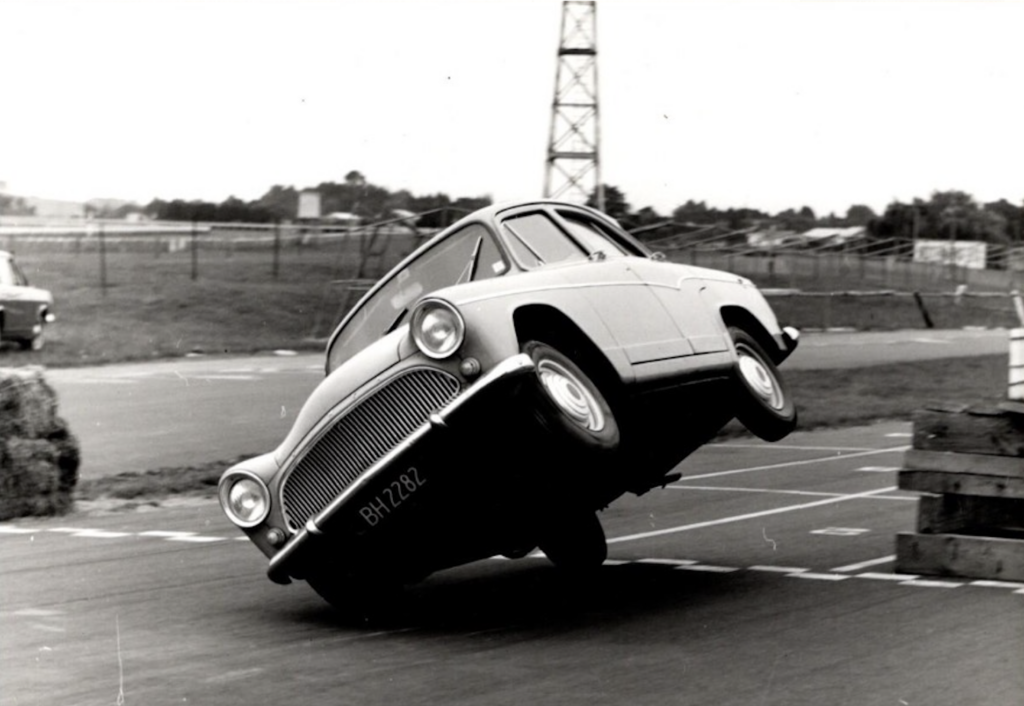
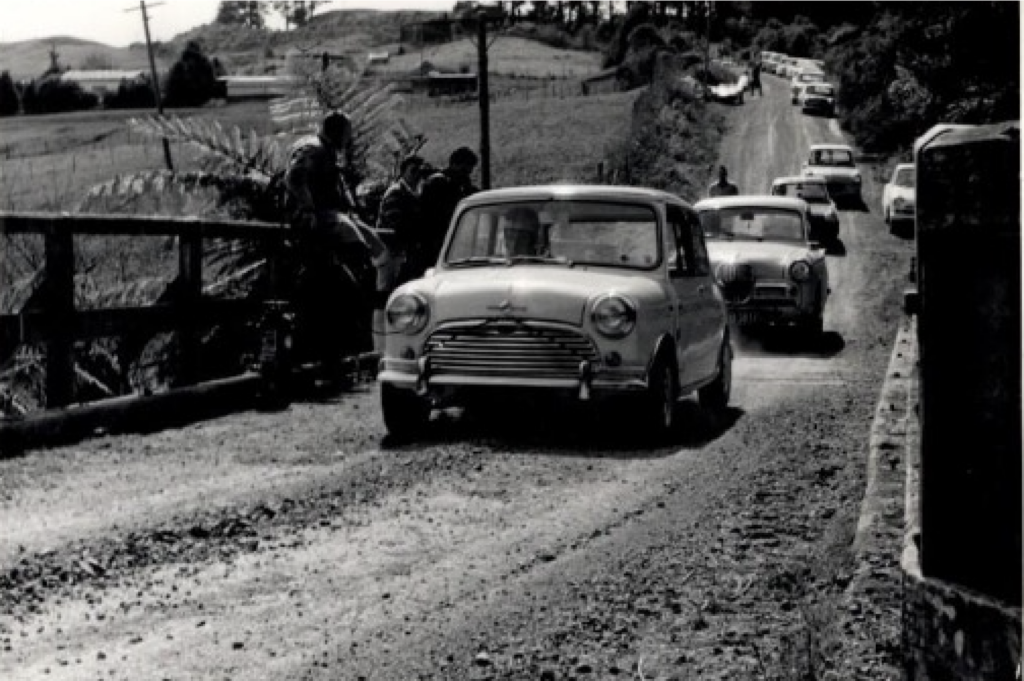
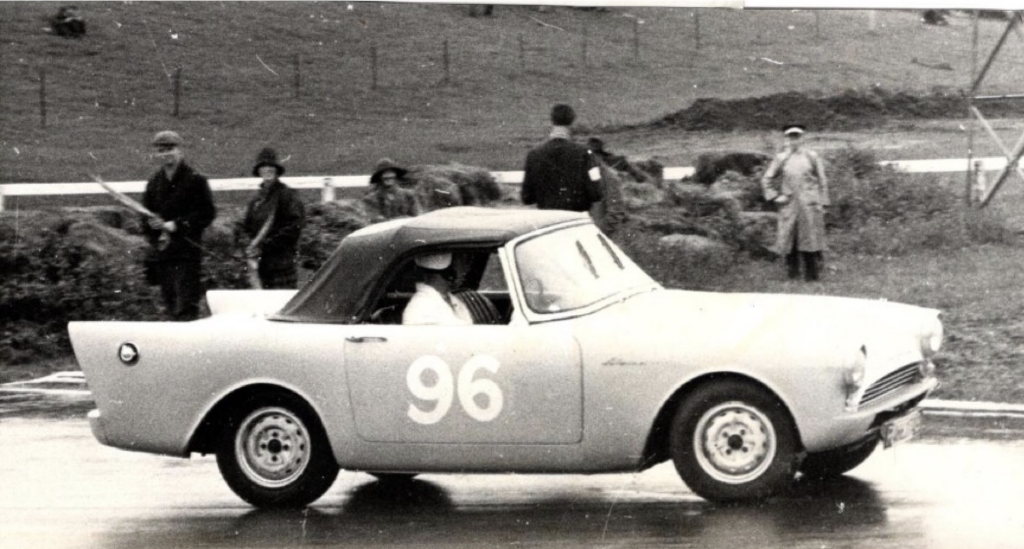
Spin cycle
For someone who’d cut his teeth doing handbrake turns in a ‘Morrie Thou’, this would be no problem. “We did Pukekohe, Levin, Wigram, and Teretonga in successive weekends,” Rodger recalls with some delight his achievement at the latter. “Three 360s in a row — it’s actually quite hard because you’re constantly going from reverse to first. The cars seemed to stand up to it OK.” Rodger acknowledges that the riverstone surface at Teretonga assisted the quest for the ‘three in a row’.
After he was part of the entertainment with the gyrating Minis in the summer of 1965, a new idea was put to him for the following season. “In ’66 we did the two wheeling in a Simca Etoile, by which time I was also racing the Cooper S and the Healey Sprite. That Sprite was a really neat little car with lovely chrome branch exhaust. We had a trailer and thought we were big time. It was reliable and the perfect sort of car to learn in — and I was a busy boy working at Anderson Electrical, and president of the MG Car Club, which meant organising events like hillclimbs.” These were times when prize money was meaningful. “People used to say ‘How do you afford to go motor racing?’, but with free fuel, oil, tyres and our winnings, I couldn’t afford to stop!”
The long-distance race at Pukekohe was generally the spring curtain-raiser to the motor racing season and Rodger recalls initially sharing Cortinas in successive B&Hs. “We ran a Mk1 in ’66, and then in ’66 I shared a Mk2 with Neville Crichton.” I wondered if these were Ford- or dealership-assisted entries but, in a reminder of simpler times, “Nah, each one was the result of a chat with a couple of mates over a beer.”
I mention my recollection of 0-1000cc races at Pukekohe following a familiar pattern. His Minis and inevitably those of Alan Boyle, Graham Watson, Barry Phillips, and one or two others, would spend the first few laps seemingly tied together in a pack following the leading bright yellow Hillman Imp of Roy Harrington that would inevitably fail, all accompanied by commentator Don Hadfield telling the crowd that “You couldn’t park them that close” and “You could place a pocket handkerchief over that gaggle of Mini Coopers.” Rodger says he “never took the Imps seriously — the only guy to do well in them was Jimmy [Richards] but, by the time he was driving the Sidchrome car, I’d moved on.”
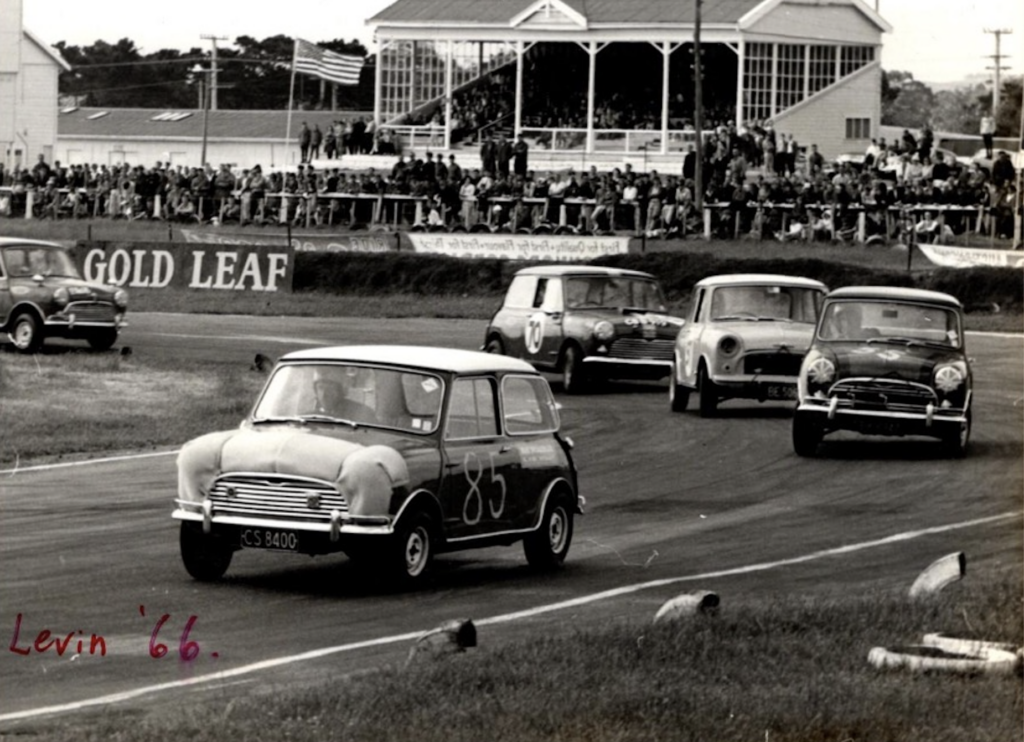
Rubbing wasn’t racing
Given the closeness of the racing, I wondered how much panel damage there was. “None! I never put a dent in a car. I hear the term ‘rubbing is racing’ these days, but it’s not, in my book. We all took great pride in our car’s presentation, and there seemed to be an unwritten rule that racing ‘door handle to door handle’ didn’t need to mean swapping paint.”
We discuss the Mini in which Rodger really made the headlines, and in a flash, he recites the number plate and factory colour. “BK842 in Almond Green. It was originally a 1071cc but for the 1967/68 season we fitted a 998cc engine and intended doing the entire series.” This was a time when the New Zealand Saloon Car Champion was determined by the driver who had scored the most points overall but where points were gathered from within the engine class they competed in.
Rodger started winning and, despite the 0-1000cc tiddlers comprising the greatest number of cars, the wins kept coming. After he won at Teretonga “with a great deal of difficulty”, the chances of not only winning his class but also the overall championship started to look possible. “Then came the first ever meeting at Levels, near Timaru. I figured that the South Islanders wouldn’t have an advantage over me here because it was new to all of us. Then it poured with rain and the meeting was postponed until the following Saturday meaning that we then had to pack up and tow the car, behind an AP5 Valiant, from Timaru to Christchurch for Ruapuna on the Sunday.
“I won Timaru and then won at Ruapuna after a bold move at the first corner. Someone rushed up to me and said, ‘You know you’ve won the NZ Saloon Car Championship!’ We really didn’t realise how good it was — it didn’t mean a lot in those days but it did lead to the Rothmans sponsorship in years to come. Because Paul [Fahey] was winning most times in the Mustang, I had to win even more races to stand a chance.”
Moving on from Minis
Winning the 1967–’68 New Zealand Saloon Car Championship from the tiddler class was the hardest way to do it, yet, despite the intense competition, Rodger won seven of the eight rounds and was third in the other. After being crowned from the smallest class, Rodger decided to move up for the 1968–’69 season, swapping the Mini’s 1.0-litre for a 1.3. The pilot revelled in the extra power.
“It was a neat little car in 1000cc form but as a 1293 it was a giant-killer.”
It didn’t give Rodger another title but there is no doubting Rodger’s fondness for that class. “I loved it.”
The 1001–1300cc class was mostly populated with the Mini Cooper S at this time and it was now a nine-round championship. The wins kept coming with six victories and a second at Teretonga; the reigning champion had ended up on equal points with Ford Mustang–mounted Paul Fahey, the dominant personality from the big-car category.
In a reverse result from the previous year when Rodger had won the championship, which was awarded for the most points across several classes, he had to settle for runner-up in ’68–’69. His effort was recorded in the Shell Yearbook.
“Anderson was out on his own in the 1001–1300cc category and made his major objective retention of the Group 5 crown for a second season. That he so nearly achieved it is the best measure of his competence.”
Then — highlighting his giant-killing prowess: “Those who saw him pull in Fahey at Ruapuna Park to provide a grandstand finish will rate him very highly indeed, although the Mustang driver was hampered by failing brakes.”
Rodger’s achievement is all the greater for racing in much bigger fields over more rounds than those competing in the big-budget classes.
Being a Mini star was all very well but Rodger had an itch he needed to scratch.
“I’d always wanted to race an open-wheeler. I paid a deposit on the ex-Great Train Robber’s Brabham and drove up to Whangarei to pick it up. Now I was the proud owner of a single-seater.”
The train robber in question was Roy ‘The Weasel’ James, who ran the car prior to his arrest.
Rodger did a club meeting with the car, then tested on the big circuit at Pukekohe. However, half a century on he acknowledges he “couldn’t get to grips with it”.
An interested observer at Pukekohe was New Zealand’s first Gold Star champion, Ross Jensen, who approached Rodger with the greeting, “What the hell are you doing with that? Come and see me in my office; I’ve got an idea”.
Rodger recalls this as being akin to being summoned to the headmaster’s study.
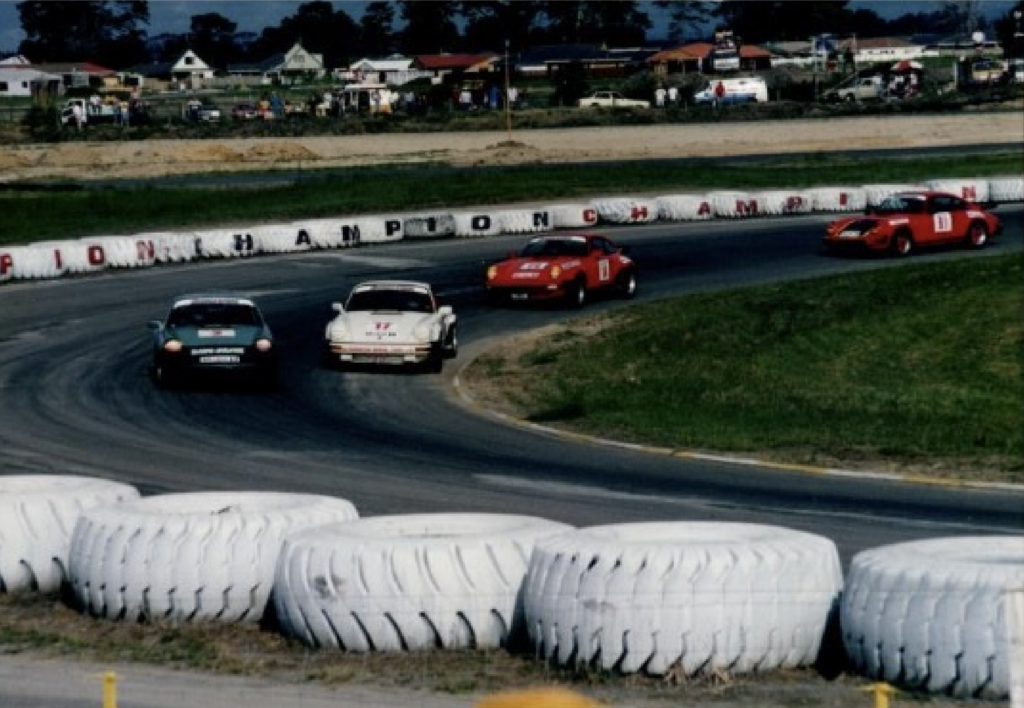
Bavaria bound
Jensen’s idea was interwoven with the manufacturer for whom he had recently been granted a franchise. For Rodger, that meant heading to Germany to oversee the preparation of his BMW 2002. The arrangement involved Rodger buying the car from Jensen.
“It was hard bringing a car in back then but my father had given me a pair of black suede shoes that were a couple of sizes too big — they were perfect for smuggling money. I arrived in Munich in the middle of 1969. I’m not sure what I was expecting but Alpina back then was nothing more than a little tune-up shop.”
The car arrived in a silver livery but it was soon in the Cambridge tobacco colours en route to introducing the local motor racing landscape to BMW’s potential by winning its class.
“The Escorts got quicker as the season went on and my initial advantage was watered down a bit. We also started having a bit of trouble with reliability.”
Instead of four groups there were now three, with the BMW slotting into the all-encompassing 1001–4200cc group. The twin-cam Escorts of Gary Sprague and Jim Richards scored 38 and 34 points, respectively, but the BMW driver prevailed with 42.
Setting the standard
The 1970 Shell Yearbook described the BMW’s pilot as “even more polished than he was a year ago” but, after he secured the 1969–’70 category title, Rodger recalls “Ross wasn’t that helpful in the second season and I didn’t do the whole championship.”
It wasn’t as if Rodger’s talents were being wasted during that 1970–’71 season.
“I was running a Valiant Pacer for Todd Motors in the standard production championship. That car was so stock that Lola and I took it on our honeymoon.”
After battling twin-cam Escorts in Group 5 form in his BMW, Rodger was offered a production version of Ford’s little champ.
“Ray Stone phoned and asked if I wanted to drive it. That was fun, and made especially good because Ray is such a thorough professional.”
It was an inspired union, and Rodger won his class in the wonderful Castrol GTX championship.
Standard production cars now became Rodger’s weapons of choice and he starred in both an E49 Charger and a Torana XU-1. It is the latter car for which Rodger has the greatest affection.
“It’s possibly my favourite car, and it was expertly prepared by ‘Jandals’ [Mark Sheehan]. Neville Crichton and I also won the Glenvale 100 in it.”
The pair have been friends since the 1960s and Rodger is fulsome in his praise of Crichton, both as a driver and as a motivator.
“I’ve always said that Neville could get more out of me than I could get out of myself.”
After winning at Levin, Rodger decided it was time to call it a day.
“Lola and I were married; we were busy with the electrical business and then our sons came along.”
However, Rodger hadn’t counted on being exposed to a marque that changed his life.
“A bloke called Alan Bremner knocked on my door one day and asked if I’d ever driven a Porsche. Alan is probably the most positive and persuasive person I’ve ever met. It was a 2.4S 911. I’ve never been the same since.”
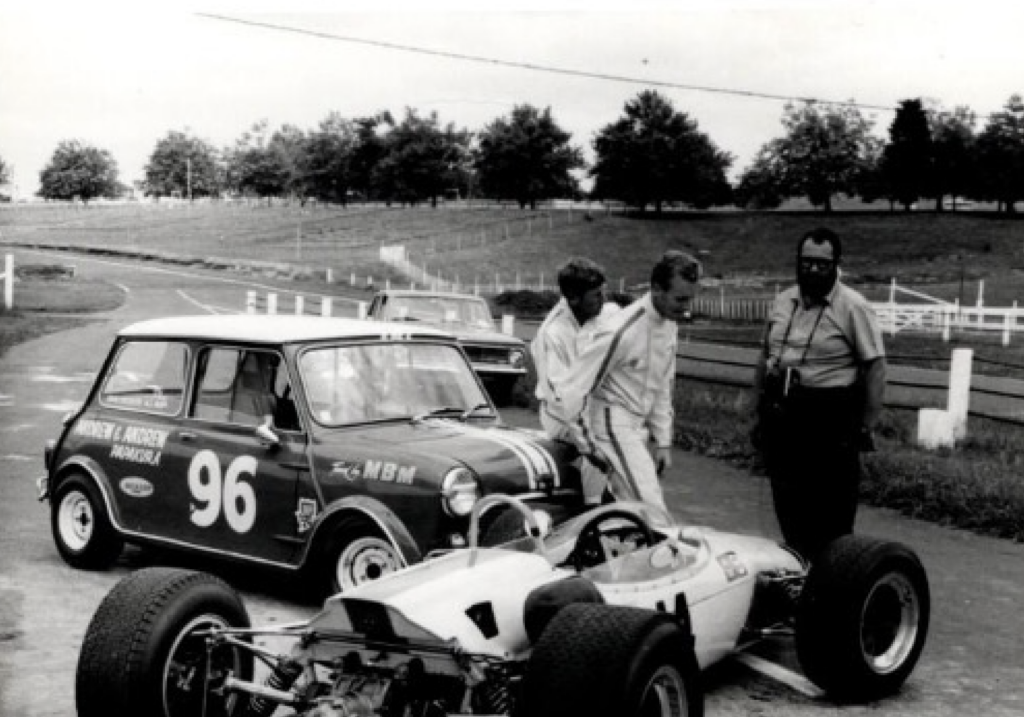
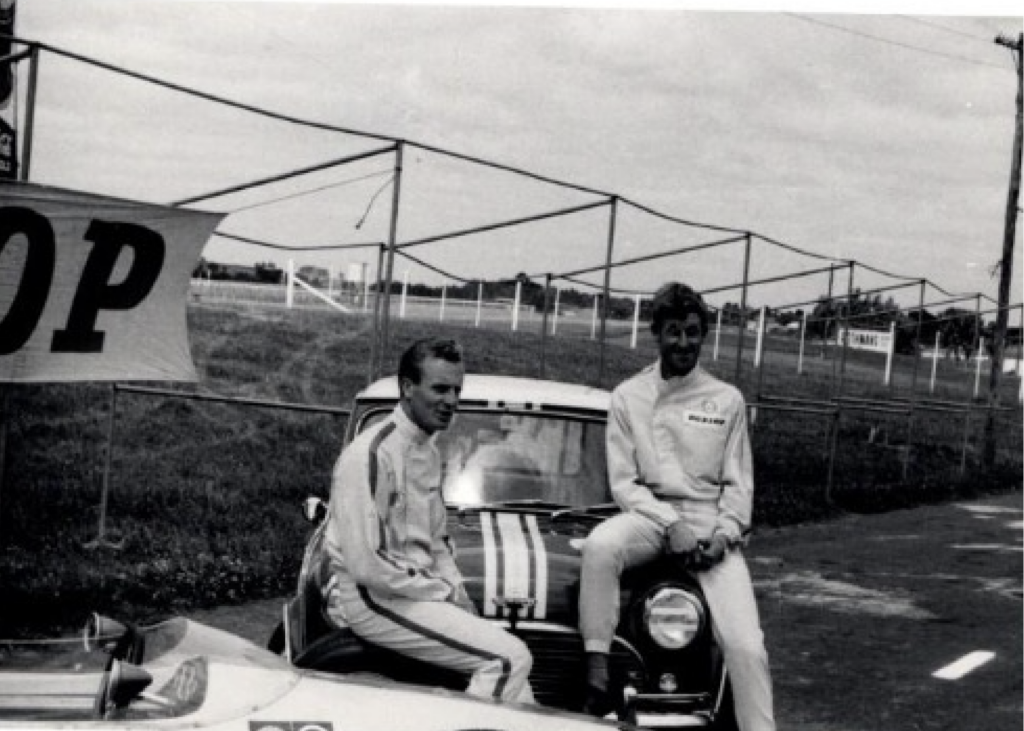
Changed for life
Rodger embraced Porsches and has owned many over the years, including an early 356, but — as had occurred in the 1960s when MGs were front and centre of his life — he didn’t just own and drive them.
“I ended up in various roles with the Porsche Club and they also made me a life member.” It’s an honour Rodger also holds within MG ranks. He’s owned a 2002 911 Turbo for 13 years and describes it as “the most underrated car, bar none”.
It was inevitable that Rodger would end up racing a Porsche and his great buddy, Paul Higgins — himself a Porsche devotee and racer — recalls, “Rodger was very much my mentor and I felt I was improving as a result of his tuition. I once had him in my mirrors coming over the hill at Pukekohe but figured that I now had that corner nailed. I did, but he drove right round me as if I was nailed to the track. I still had much to learn.”
Paul also recalls a day when Rodger got himself massively out of shape in the sweeper at the end of Pukekohe’s front straight.
“I’d seen it all unfold and wondered how he’d still managed to negotiate the left-hander. His answer was, ‘You’ve got to drive a Porsche like you’ve got rotten eggs on the pedals’ — as in: you’ve got to be gentle and not risk breaking them.”
Paul is also highly complimentary about Rodger’s contribution to the Porsche Club.
“He’s been very good at giving his time and knowledge. Rodger’s done a lot for our driver training — but he’s not really the best passenger alongside a novice driver.”
Rodger introduced his two sons to trail riding.
“I used to do a lot with Alan Boyle” — the driver of beautifully prepared Minis when the Anderson car was the one to beat.
Then came motocross with Wade and Cam. “Lola was shuffling between stopwatch, tyre pressure gauge, and lunches.”
As I reversed down Rodger’s driveway after our lunch, I took one last look past the pair of Porsches. Yes, it really was a Mustang in concours condition in his garage — a version of the car he was so keen to beat in his Mini. Clearly, that didn’t disqualify them from his affection. As he said himself, “I just really love cars — so long as they’re interesting.”

